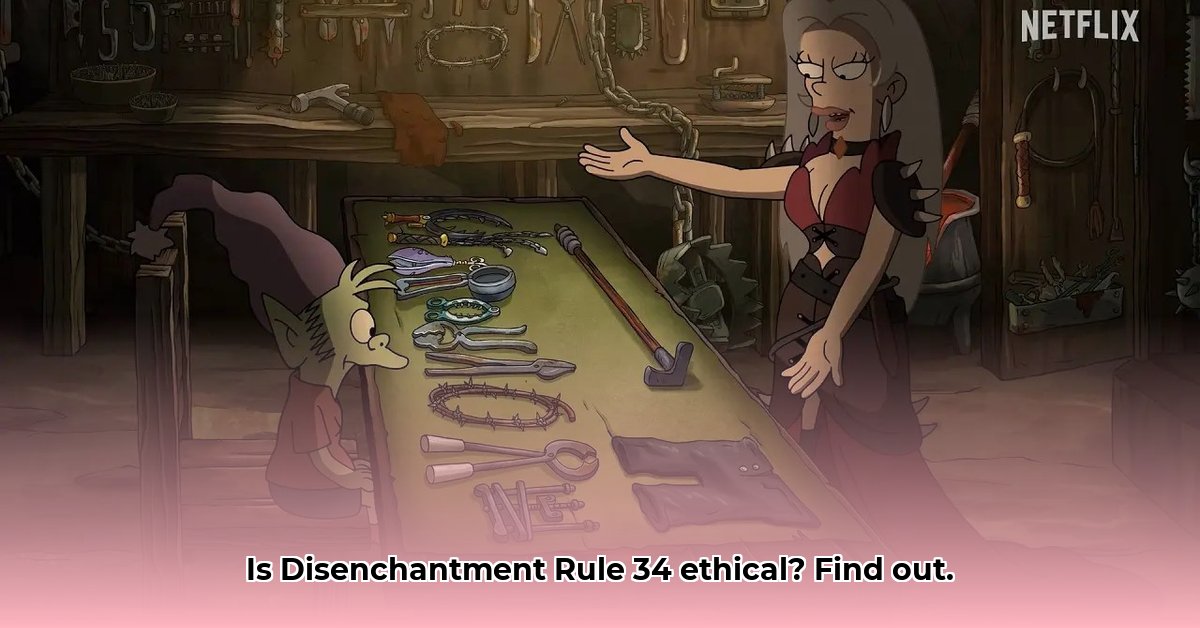
Navigating the Complexities of Adult Fan Art
The proliferation of online fan communities has led to a surge in user-generated content, including artwork depicting characters from popular shows and books in sexually explicit ways. This phenomenon, often associated with "Rule 34," presents a complex ethical and legal landscape. This article explores the key considerations surrounding adult fan art, focusing on the intersection of creativity, copyright, and potential harm. We'll examine the legal implications, ethical dilemmas, and the crucial role of online community moderation in navigating this intricate space. Understanding the nuances of this topic is crucial for both creators and consumers of fan content.
The Legal Minefield: Copyright and Fair Use
The creation and distribution of fan art, particularly explicit content, immediately raises complex copyright issues. While copyright protects the original works and characters, the "fair use" doctrine allows for certain uses of copyrighted material without permission, frequently for criticism, commentary, or parody. However, determining whether a specific piece of fan art qualifies as "fair use" is often contentious and requires a nuanced legal analysis. Factors such as the purpose and character of the use, the nature of the copyrighted work, the amount and substantiality of the portion used, and its effect on the potential market for or value of the copyrighted work, must be considered. This makes legal certainty difficult to achieve. Moreover, the interpretation of "fair use" can vary significantly depending on the specific circumstances and jurisdiction.
Ethical Considerations Beyond the Law
Even if a piece of fan art doesn't infringe on copyright law, crucial ethical considerations remain. Depicting characters in sexualized or exploitative ways without the consent of the original creators raises concerns about respect for intellectual property and artistic integrity. Additionally, many adult fan works portray characters in situations that could be considered non-consensual, potentially normalizing harmful behavior. The potential impact on viewers must also be contemplated. Exposure to explicit content can be deeply disturbing, especially for children or individuals who have been victims of sexual violence; this is not to mention the potential negative effect on the viewership of the source material as a whole. These ethical concerns demand critical reflection from both creators and consumers of fan art.
The Role of Online Communities and Moderation
Online platforms and communities play a significant role in the dissemination of fan art, including explicit content. The responsibility of these platforms to moderate and control the content shared within their spaces is paramount. Effective moderation is crucial to prevent the spread of harmful or exploitative material. This involves establishing clear community guidelines, consistent enforcement of those guidelines, and providing mechanisms for users to report inappropriate content. A failure to properly moderate content can create hostile spaces, expose vulnerable individuals to inappropriate material, and can lead to legal liability for the platform itself.
Striking a Responsible Balance: Creating and Consuming Fan Content
The challenge lies in finding a responsible balance that respects both artistic expression and the ethical and legal considerations outlined above. Open dialogue and careful self-reflection are essential for creators and consumers alike. Creators should carefully consider the ethical implications of their work, prioritizing consent and avoiding the creation of content that could be harmful or exploitative. Consumers should be critical of the materials they engage with and support platforms that actively promote safety and ethical behavior. Further research is needed to fully understand the impact of this type of fan content, and ongoing discussions are vital to continue evolving understandings of responsible creation and consumption.
Key Takeaways:
- Legal Uncertainty: Determining fair use in fan art is complex and depends on numerous factors.
- Ethical Responsibilities: Creators must consider the potential harm of their work and creators must prioritize consent and avoid exploitative content.
- Effective Moderation: Platforms must establish and enforce clear guidelines to promote safe online spaces.
This article provided an overview of some of the legal and ethical considerations involved in fan content creation. It is important to note that the discussion involved in this topic is complex and ongoing, with many perspectives existing on the matter. This is a topic that requires ongoing research and critical analysis.